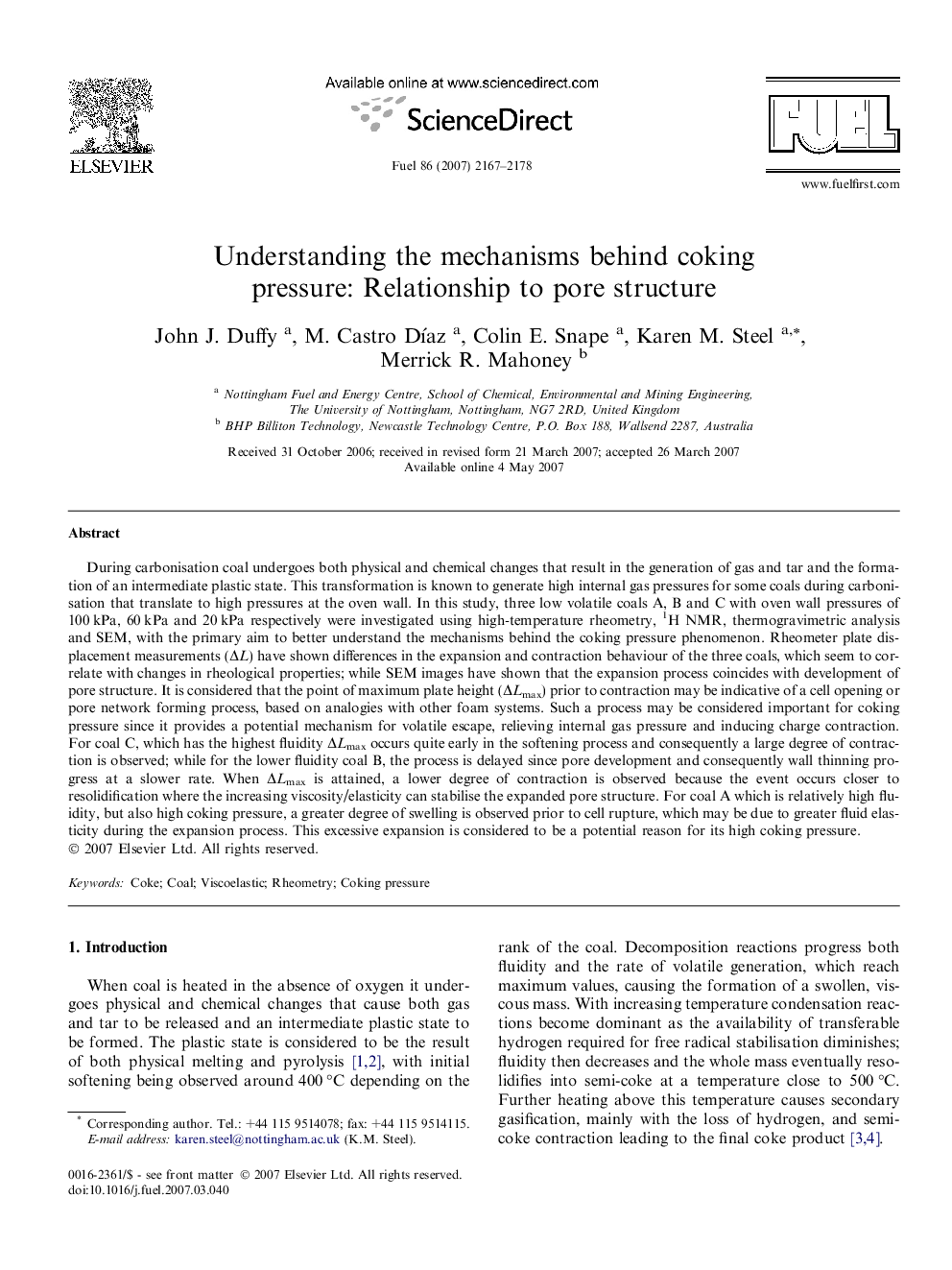| کد مقاله | کد نشریه | سال انتشار | مقاله انگلیسی | نسخه تمام متن |
|---|---|---|---|---|
| 207423 | 461216 | 2007 | 12 صفحه PDF | دانلود رایگان |

During carbonisation coal undergoes both physical and chemical changes that result in the generation of gas and tar and the formation of an intermediate plastic state. This transformation is known to generate high internal gas pressures for some coals during carbonisation that translate to high pressures at the oven wall. In this study, three low volatile coals A, B and C with oven wall pressures of 100 kPa, 60 kPa and 20 kPa respectively were investigated using high-temperature rheometry, 1H NMR, thermogravimetric analysis and SEM, with the primary aim to better understand the mechanisms behind the coking pressure phenomenon. Rheometer plate displacement measurements (ΔL) have shown differences in the expansion and contraction behaviour of the three coals, which seem to correlate with changes in rheological properties; while SEM images have shown that the expansion process coincides with development of pore structure. It is considered that the point of maximum plate height (ΔLmax) prior to contraction may be indicative of a cell opening or pore network forming process, based on analogies with other foam systems. Such a process may be considered important for coking pressure since it provides a potential mechanism for volatile escape, relieving internal gas pressure and inducing charge contraction. For coal C, which has the highest fluidity ΔLmax occurs quite early in the softening process and consequently a large degree of contraction is observed; while for the lower fluidity coal B, the process is delayed since pore development and consequently wall thinning progress at a slower rate. When ΔLmax is attained, a lower degree of contraction is observed because the event occurs closer to resolidification where the increasing viscosity/elasticity can stabilise the expanded pore structure. For coal A which is relatively high fluidity, but also high coking pressure, a greater degree of swelling is observed prior to cell rupture, which may be due to greater fluid elasticity during the expansion process. This excessive expansion is considered to be a potential reason for its high coking pressure.
Journal: Fuel - Volume 86, Issue 14, September 2007, Pages 2167–2178